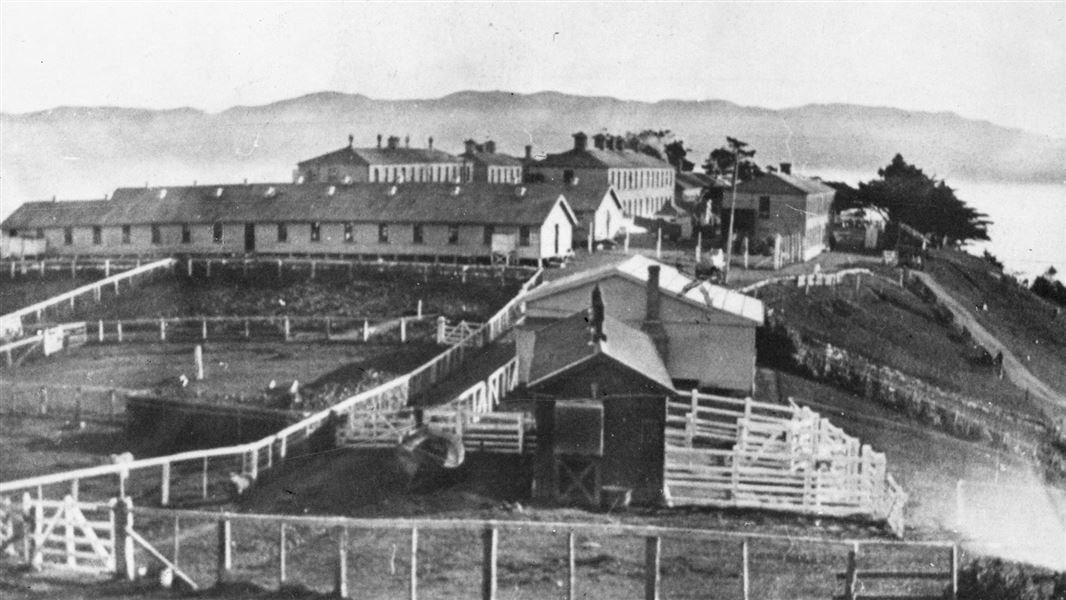Matiu/Somes Island’s harbour location near a major settlement means it was perfectly placed to have a key role in New Zealand’s defence history.
‘Enemy Aliens’
During World War I (1914-1918) the human quarantine barracks were used to hold enemy aliens who were considered a risk to New Zealand’s security. Around 300 prisoners were held on the island, most of whom were German nationals. Some of those held were born in New Zealand and had families, businesses and established lives here.
In World War II (1939-45) the island once again became an internment camp. While the prisoners were primarily German, there were a large number of Italian and Japanese nationals. They were moved to Pahiatua at the start of 1943 during the short period when the anti-aircraft artillery battery was operational but returned to the island in September 1944 when the guns were removed.
The internees were required to do road-building, gardening and fishing. For this they were paid a small daily allowance. They also had the opportunity to earn additional money by making small items such as wooden toys and pāua jewellery. Some internees tried to escape the island by swimming or stealing a boat but there are no successful escape tales from Matiu/Somes.
Heavy anti-aircraft artillery battery
In 1942 four 3.7-inch heavy anti-aircraft guns were mounted on Matiu-Somes Island. Their job was to combat high flying enemy aircraft. They were built at a time when the war in the Pacific was finely balanced. Japan had bombed Pearl Harbour, but the fear was brought much closer to home when Darwin, Australia was first bombed in February 1942.
The guns used on Matiu/Somes Island were 3.7 inch calibre and could punch a shell to 10,000 feet in 14 seconds. The position was manned from January 1943 to September 1944 but was never called into action.
Today
There are several buildings of interest that can still be seen today:
- Immigration barracks – these were originally built for the influenza pandemic 1919 and then used to accommodate internees during World War II. Half of one of the barracks remains today.
- Degaussing station – consisted of 12 detectors between two buoys 125m apart, about 1km off the eastern side of the island. Allied and British merchant ships were required to pass over the range to get a reading. They would then be advised by the Women’s Royal Navy Service (WRENS), if they needed to be degaussed – which was reducing the magnetic signature of the vessel by a copper cable hung around the hull. A concrete pad, foundations and some fencing can still be seen at the site of the station, which was demolished by the navy at the end of the war.
- Hospital – this was built in 1918 to care for sick prisoners. It is now the DOC Field Centre.
- Heavy anti-aircraft artillery battery - the five concrete structures on the levelled hilltop on the island represent a command post and four gun positions. One gun emplacement has been damaged, but the structures are otherwise much as they were when they were decommissioned by the army after the war.
DOC's work
In May 2008, a plan for remedial work was initiated for the barracks. The main focus of the work was stabilising the building and making it weather-proof. In June 2009 the work continued with a major reclad of the exterior with matching 9-inch profile Wellington weatherboards.
As part of the reclad project, groups of volunteers gave their time to paint the new weatherboards in preparation of the installation by professional contractors.
Further work will be carried out as resourcing allows – watch this space!
